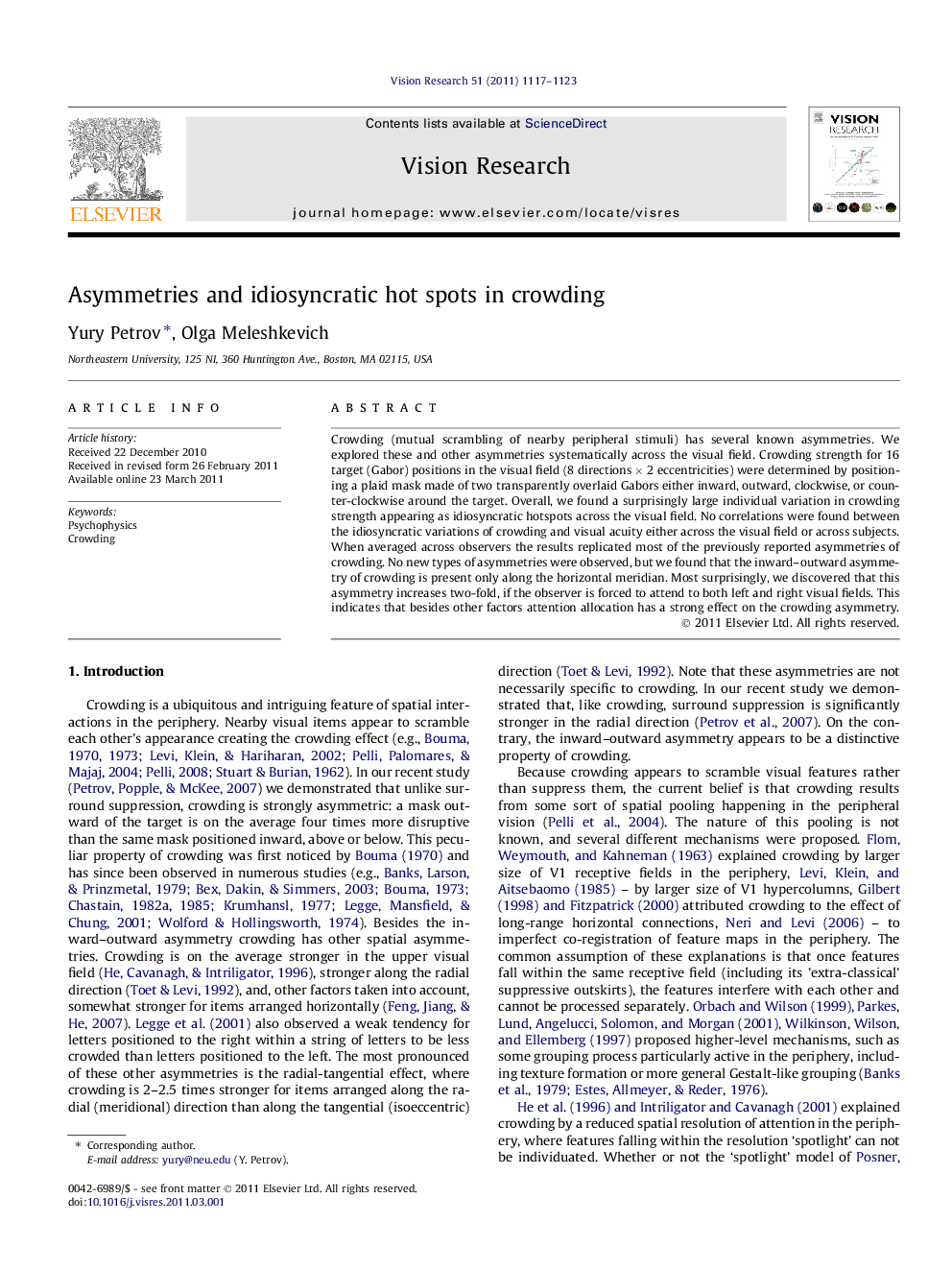| Article ID | Journal | Published Year | Pages | File Type |
|---|---|---|---|---|
| 4034281 | Vision Research | 2011 | 7 Pages |
Crowding (mutual scrambling of nearby peripheral stimuli) has several known asymmetries. We explored these and other asymmetries systematically across the visual field. Crowding strength for 16 target (Gabor) positions in the visual field (8 directions × 2 eccentricities) were determined by positioning a plaid mask made of two transparently overlaid Gabors either inward, outward, clockwise, or counter-clockwise around the target. Overall, we found a surprisingly large individual variation in crowding strength appearing as idiosyncratic hotspots across the visual field. No correlations were found between the idiosyncratic variations of crowding and visual acuity either across the visual field or across subjects. When averaged across observers the results replicated most of the previously reported asymmetries of crowding. No new types of asymmetries were observed, but we found that the inward–outward asymmetry of crowding is present only along the horizontal meridian. Most surprisingly, we discovered that this asymmetry increases two-fold, if the observer is forced to attend to both left and right visual fields. This indicates that besides other factors attention allocation has a strong effect on the crowding asymmetry.
► Systematically explored crowding asymmetries across the visual field for six subjects. ► Found large individual variation in crowding appearing as idiosyncratic hotspots. ► Inward–outward asymmetry of crowding is present only along the horizontal meridian. ► Splitting attention between left and right visual fields increased the asymmetry two-fold.
